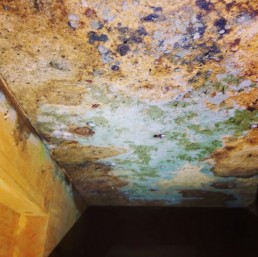There are a number of articles on this website about fungi and how it can have a negative impact on people’s health and welfare. Some people are more likely to experience a negative impact than others – for example children, pregnant women and the elderly.
Whilst many of our articles have focussed on getting a mould infestation cleaned, this article focuses on how mould grows so you can identify areas around your house that may be at risk.
The the main factors affecting fungal growth.
- pH
- Moulds differ in their pH requirements but the most common pH range is 3-7. That is, most mould requires slightly acidic conditions to flourish.
- Moisture
- Mould requires moisture to flourish.
- You need to try and avoid damp areas around your house.
- Air
- Airflow is an important factor in encouraging mould growth.
- It’s common to find mouldy areas around heaters and airconditioners.
- Nutrients –
- Mould needs to be fed. It needs nutrients to grow.
- Moulds can require high sugar or high salt.
- Nutrient requirements are different depending on the mould you are talking about.
- Temperature
- The most common temperatures where mould will grow is between 15 and 30 degrees Celsius.
- Having said that, there are some moulds that thrive above 45 degrees Celsius
- Light
- Many moulds flourish in dark spaces but some prefer an alternate light pattern – some light, and some dark.

